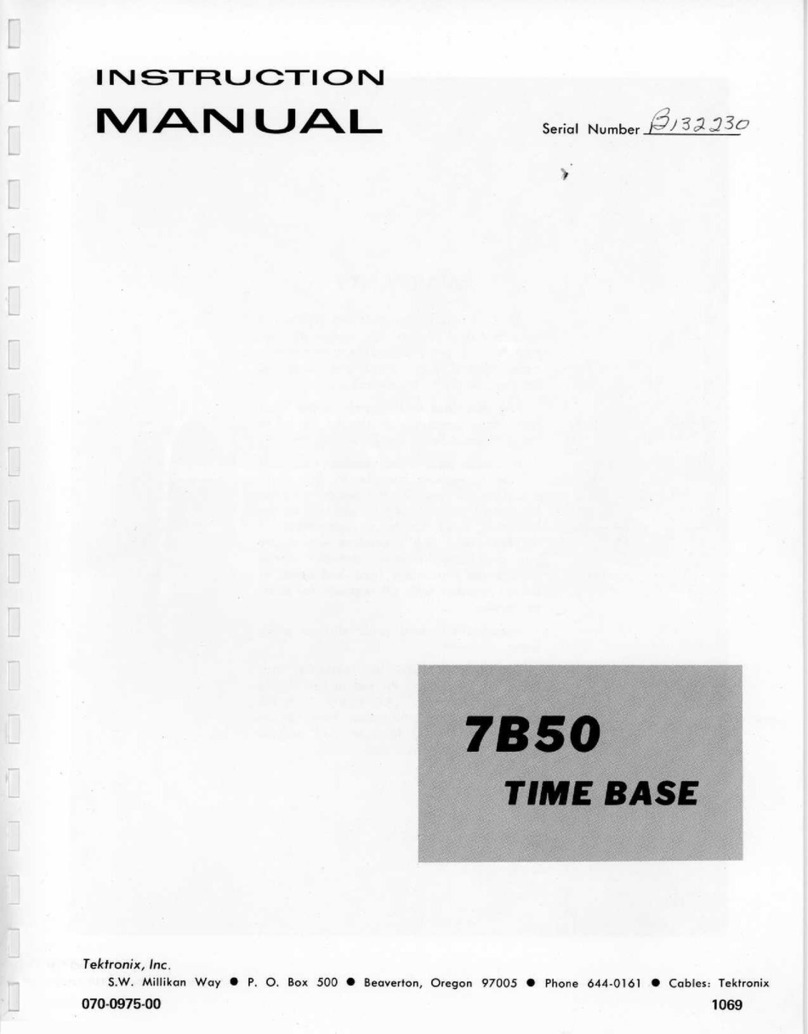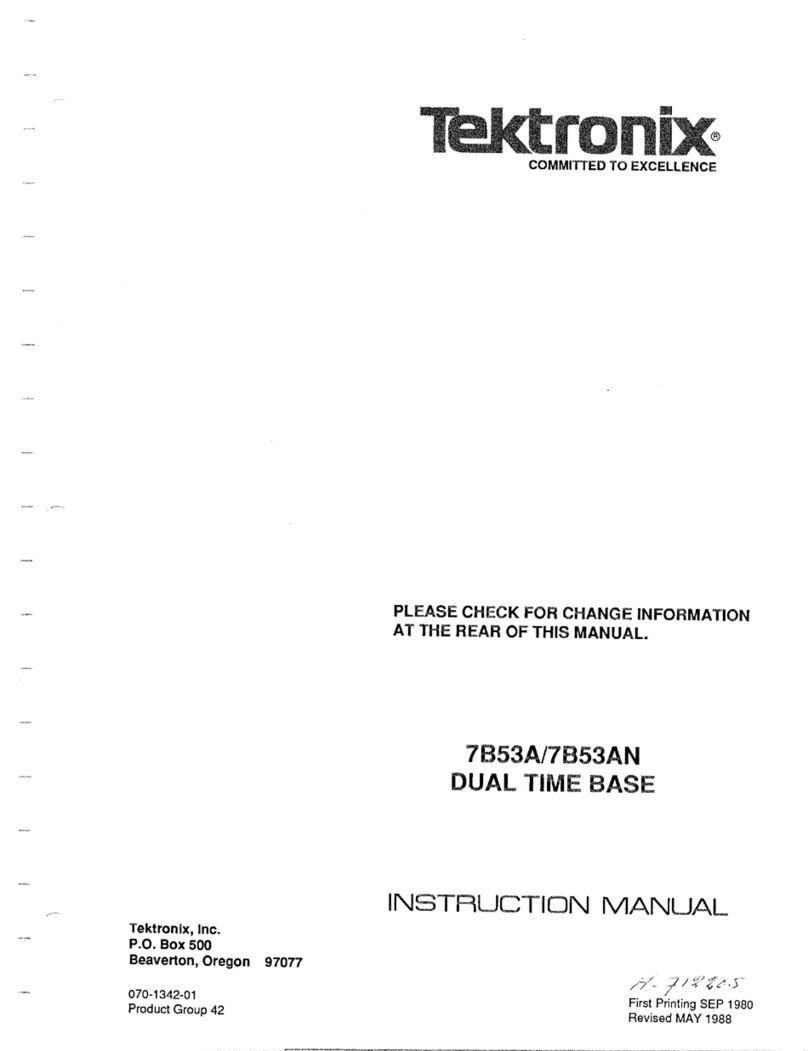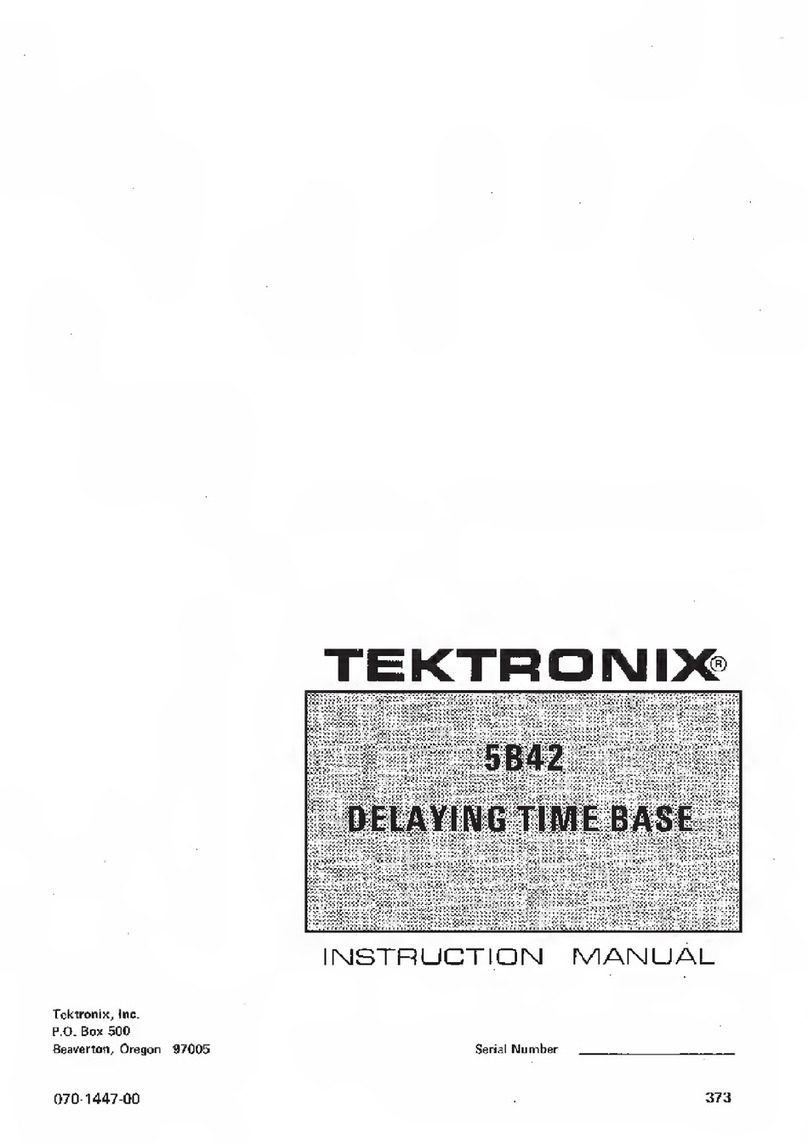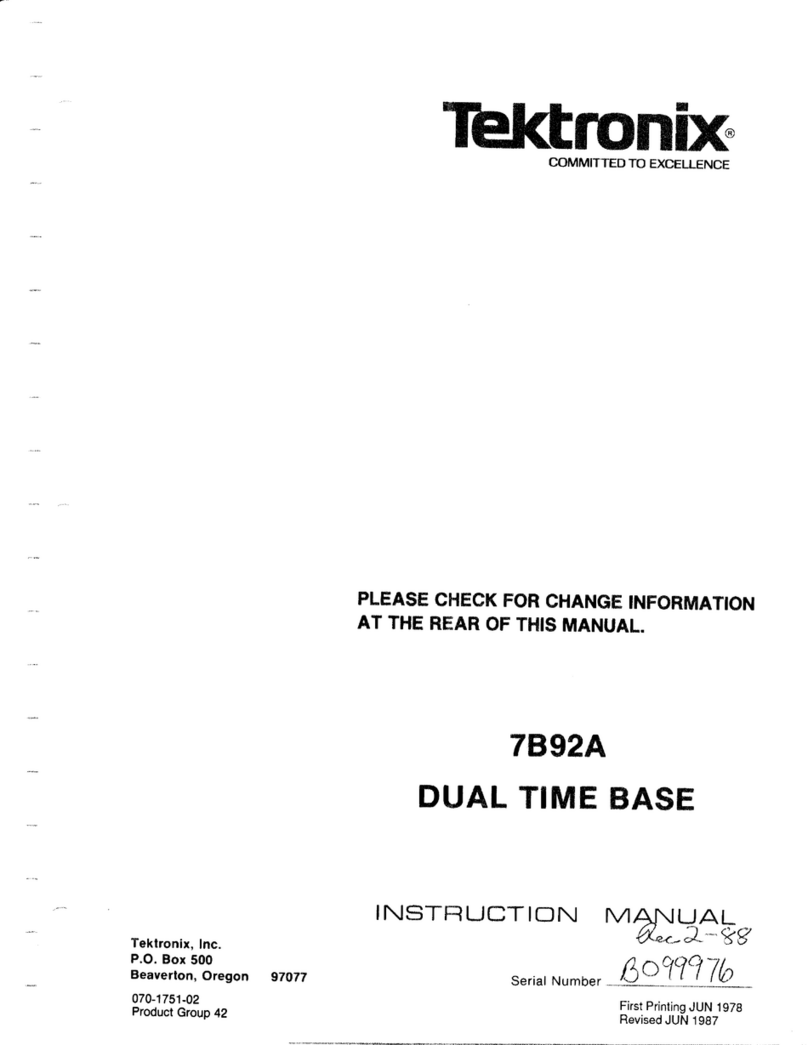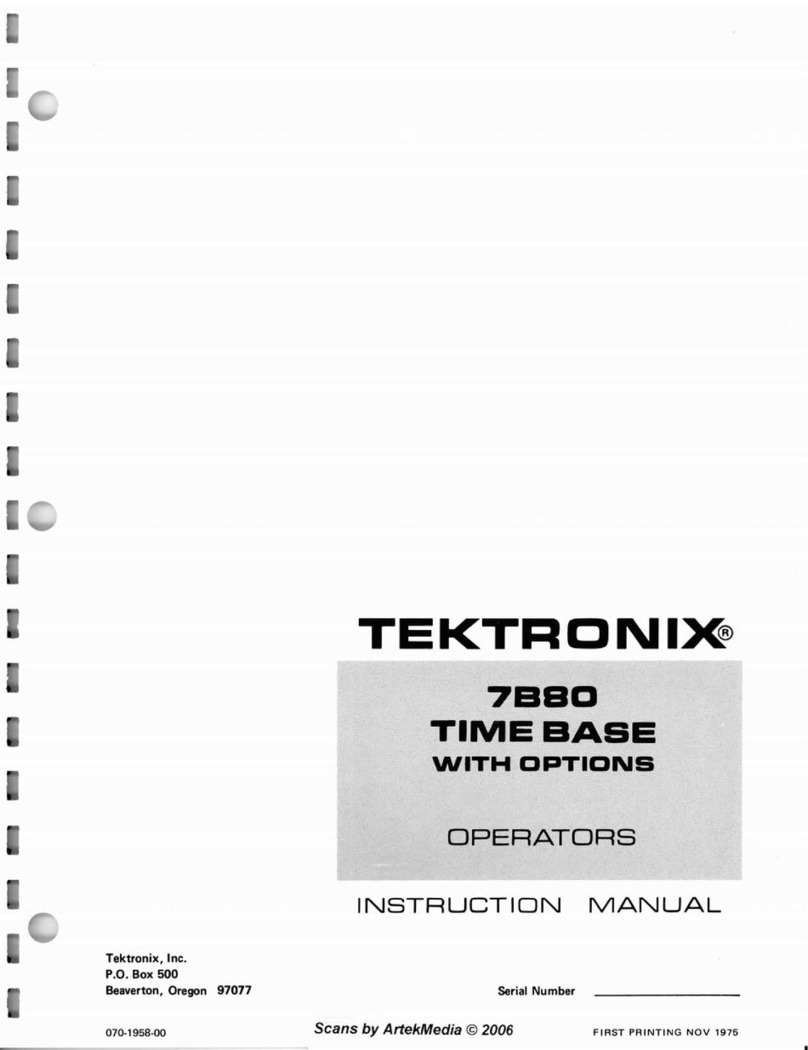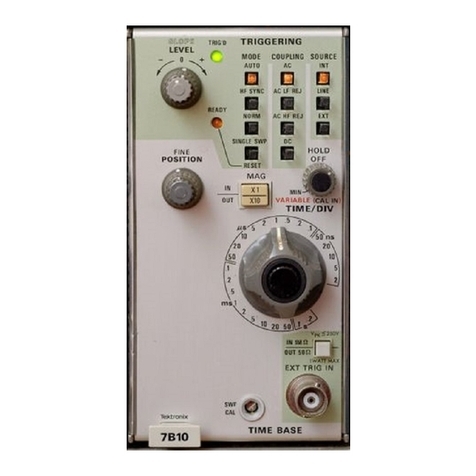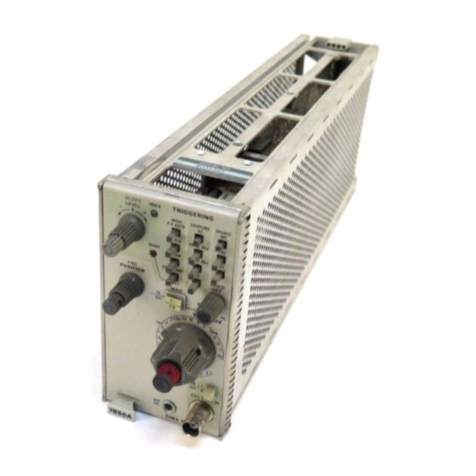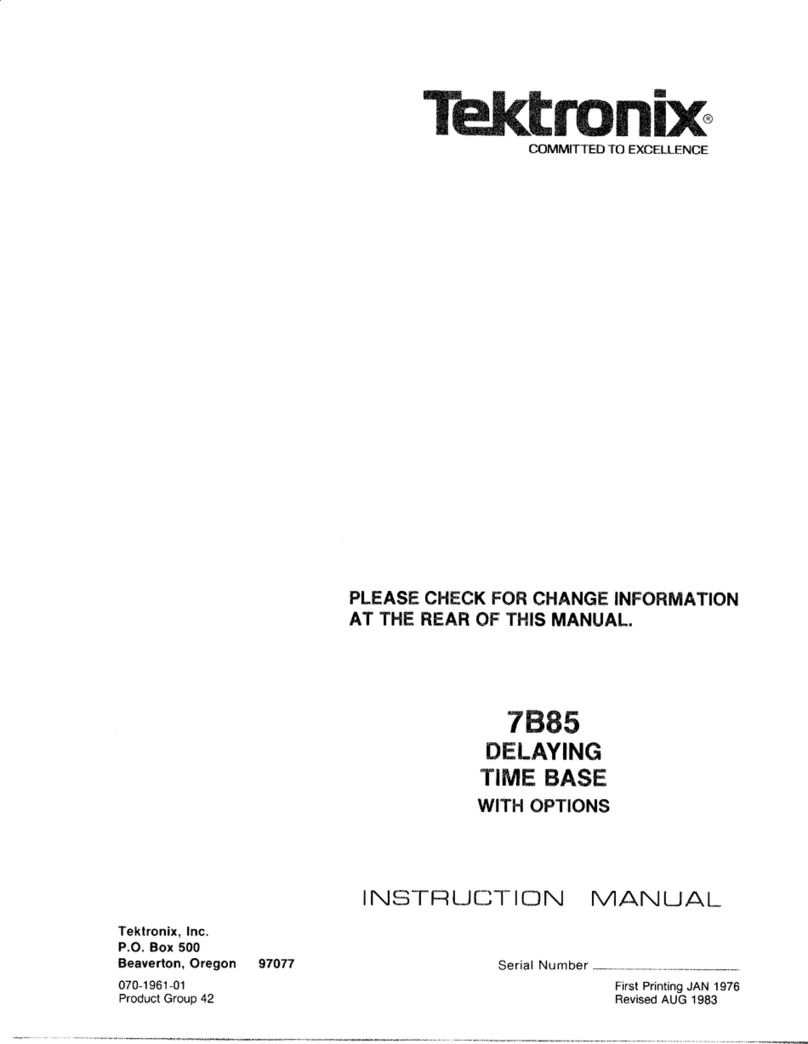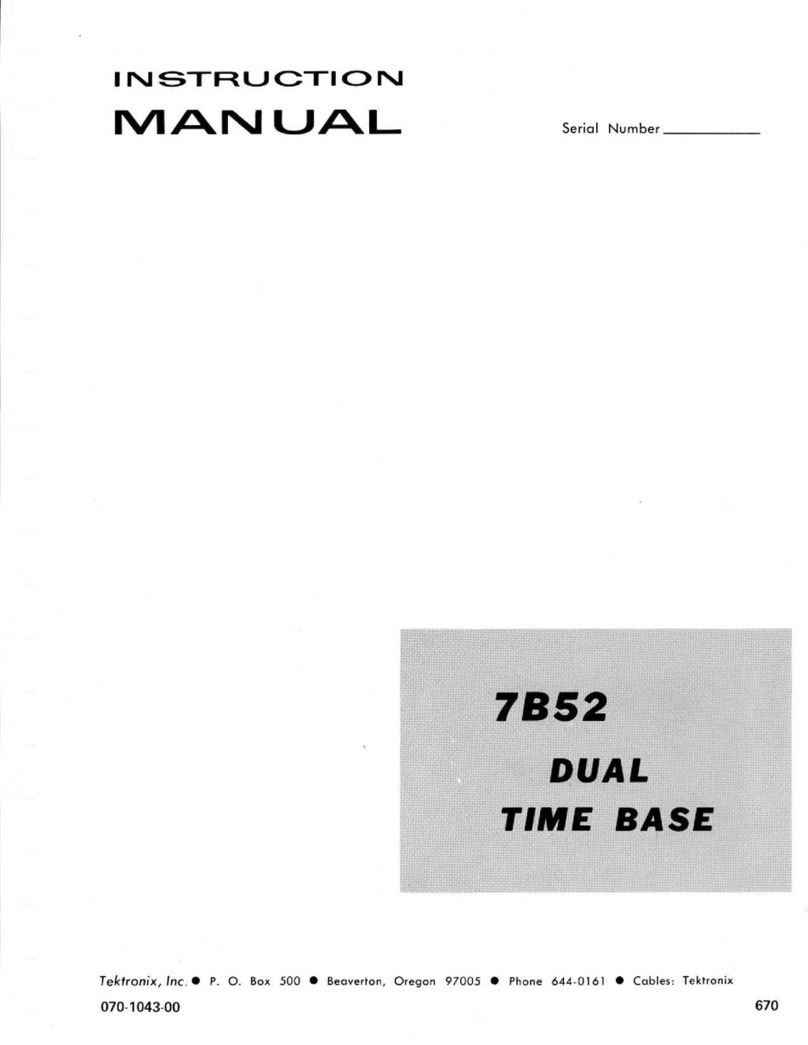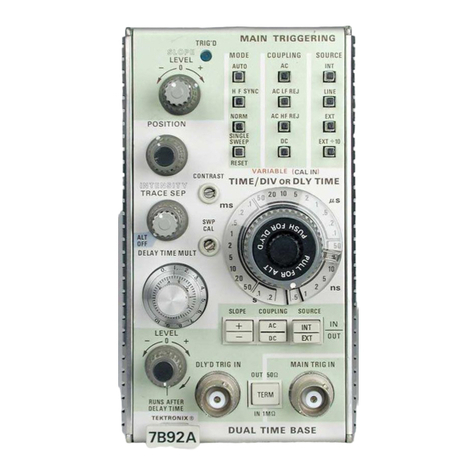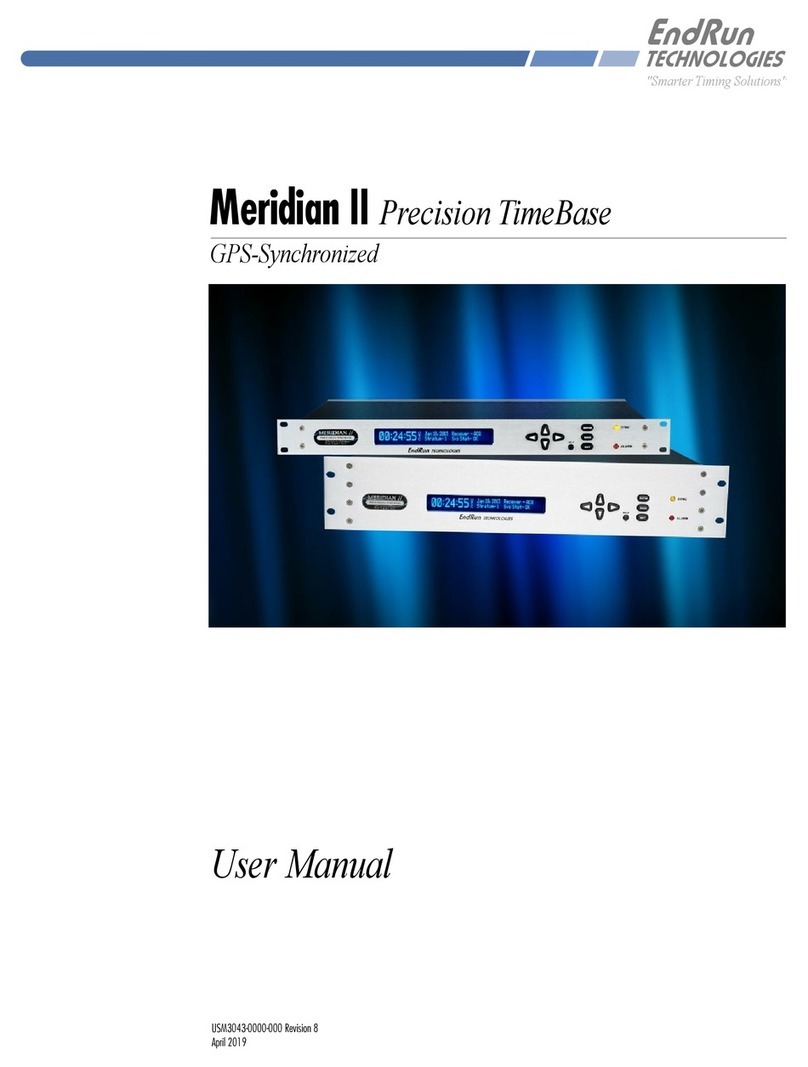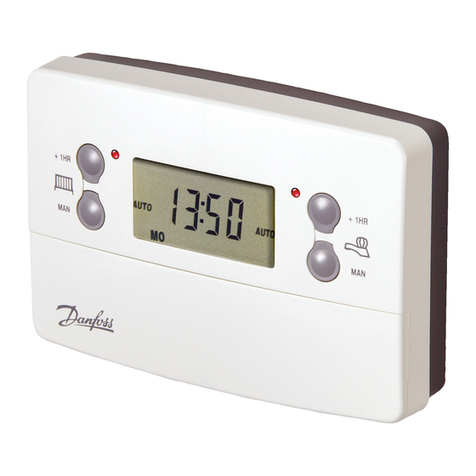SECTION 1
SPECIFICA TION
7T11
Change information, if any, affecting this section will be found at the rear of the manual.
General Information
The 7T1 1Sampling unit is designed for use in Tektronix
7000-series oscilloscopes. Several plug-in combinations,
including a7T1 1, are shown in Fig. 1-2. A7S1 1must be in
the compartment to the left of, and adjacent to, the com-
partment in which the 7T11 is operated. Therefore, two
7T1 1's are not used in the same mainframe.
In Fig. 1-2A the 7T11 is shown in the "A" Horizontal
compartment of the oscilloscope. The Vertical Mode and
Horizontal Mode pushbuttons, providing useful presenta-
tions, are designated for plug-in configurations A, B, and C.
For the configuration of Fig. 1-2A, four combinations are
shown. Plug-in arrangements other than those shown in Fig.
1-2 are possible.
An alternate to the configuration shown in Fig. 1-2B is
with the "LEFT" or "B" or both of these mainframe com-
partments empty. The 7M11 may be used in any available
mainframe compartment or operated out of the mainframe.
For further information, see the Operating Instructions
section of this manual under the heading of General
Operating Information.
Instrument Features
The 7T11 features awide range of sweep rates using
real-time and equivalent-time sampling. Concentric switches
select the sweep range and time position range in different
combinations for the time/div desired. On equivalent time
ranges, either sequential or random sampling is available.
Use of random sampling permits display of the leading edge
of fast-rise input signals without the use of asignal delay
line (such as the 7M1 1) or apretrigger pulse from the signal
source.
Internal triggering, or any of three modes of external
triggering can be selected by using the front panel
pushbuttons. ASchmitt trigger circuit is used except
when HF SYNC is selected. With EXT 50 Cl input
selected, the Schmitt circuit provides jitter free triggering
from input trigger signals from DC to 1GHz. The display is
free of trigger jitter or double triggering, even at low trigger
repetition rates or when using asquare wave as the input
trigger signal. Arecovery time control is not needed.
Selecting EXT HF SYNC permits using frequencies of 1
GHz to approximately 12 GHz as the trigger input source.
With HF SYNC selected, the signal connected to the TRIG
INPUT connector is routed to abuilt-in synchronizer, thus
permitting Xband signals to be viewed.
Excellent sweep linearity is provided when using the
7T11. The timing circuitry in the 7T11 uses atime
measurement rather than atime programming process for
horizontal sample positioning on all equivalent-time sweep
ranges. During both random and Sequential operation the
horizontal position of the dot on the screen is determined
by measuring the time interval between strobe and trigger.
This method results in improved timing linearity and a
reduction in display jitter. The accuracy of sweep timing
and linearity make it unnecessary, during equivalent time
sampling, to exclude the sweep start from accuracy specifi-
cations.
Characteristics
The following characteristics apply over an ambient tem-
perature range of 0°C to -t50°C at altitudes up to 15,000
feet and after afive-minute warmup, providing the instru-
ment was calibrated at atemperature between -t20°C and
-H30°C. During non-operation, do not subject the 7T11 to
altitudes above 50,000 feet or to temperatures below
-55°C.
ELECTRICAL CHARACTERISTICS
Characteristic Performance Requirement
SWEEP RATES
TIME/DIV Calibrated from 5ms/div to 10
ps/div, selectable in a1, 2, 5se-
quence, using SWEEP RANGE and
TIME/DIV controls.
1-1
